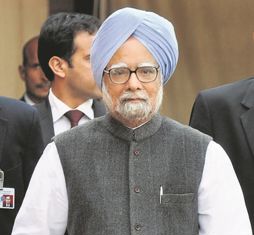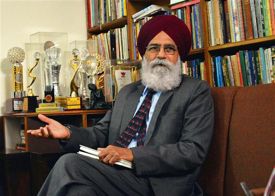The Earthspinner by Anuradha Roy. Hachette. Pages 223. Rs 599
Book Title: The Earthspinner
Author: Anuradha Roy
Ranjit Powar
Award-winning author Anuradha Roy dips her pen into a tale of impudent longings after having etched “An Atlas of Impossible Longings”, which bagged the DSC Prize for 2016. “The Earthspinner” spans ethnic and religious identities refracting perceptions through bigoted lenses, using religion as an axis of conflict rather than love. What makes the earth spin — brute power and hate, or love and creativity? What will be the human cost for underpinnings of forbidden, impudent longings that spin fire in Elango’s heart faster than his dexterous hands spin clay on a potter’s wheel; longings that bloom like the first buds of spring in a teenage girl’s heart; longings that rumble through the life of an expat Chinese girl student in a university in the UK, leaving behind broken shards in their wake?
“There is a girl I like — she is…” And then despair would eat up his words. He could not utter what she was, a Muslim. The space between the two was a charnel house of burnt and bloodied human flesh, a giant crack through the earth that was like an open mouth waiting to swallow him.
Elango’s dream-chasing Hindu heart has taken a fancy to Zohra, a Muslim calligrapher’s daughter, who returns his passion. Who can say whether the scrawny girl who walks with a limp is actually beautiful, or an artist’s magic to conjure up beauty in clay makes her so? The unbearable heat of his hidden desires finds expression in the exhilarating, painstaking process of creating a grand, beautiful terracotta horse. Similar horses had traditionally been made in the village of Kummarapet to be offered to the Gods. Elango’s horse would be an offering to Zohra, the Goddess of his love.
“Once long ago, the fires of Shiva’s rage had to be stored in a horse that still walks the ocean floor, breathing out flames.”
How many horses would be needed to hold the flames of rage and violence that consume villages, homes and people in unbridled furies evoked without rationale? The story alternates between India and England, between men and women from diverse countries, faiths and communities struggling to survive the flames of hatred in their quest for love.
Kummarapet has Akka, the venomous old Hindu matriarch, a self-appointed moral watchdog in the neighbourhood, who wrought death and destruction over an alliance between a Hindu boy and a Muslim girl. In England, the Chinese athlete Karin knows that Darius is from the Parsi community, which forbids its members from marrying outside the clan. She discovers her love for Miranda, dreading her parents’ reaction if they were to learn of it.
Roy’s use of metaphor and expression is dexterous and original, but her characters’ emotions are sometimes puzzling. Elango’s attitude towards Sara when he meets her in England after a gap of many years is not precisely predictable. “There was something fumbling and embarrassed about our meeting at first. Having no way of contacting him, I had not told him I would be coming and I could not tell if he was annoyed or pleased to see me.” Yet, she stays back to spend four days with him, listening to his experiences during the years they have spent apart. Elango is startled and annoyed rather than pleased to see Sara, who returns to see him off when he flies to India. Yet, he gifts her a valued set of pottery tools.
Chinna, the dog who has made the entire village his home through unconditional affection, growls at his former owner when she finally finds him after a long search. Despite some perplexing depictions, the book is an engaging read about the process of creation, emotions and syncretism.
“I’m bowl/ And I’m platter/ I’m man/ And I’m woman… I’m nothing/ Says Kabir, I’m not among the living/ Or the dead.”














